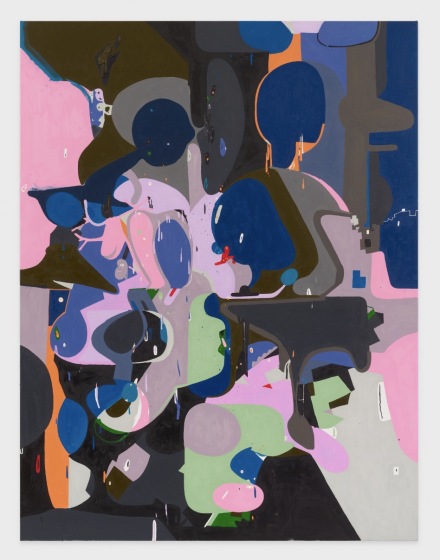
Michael Williams, Frogs 9 (2022), via Eva Presenhuber
Over the course of his work, painter Michael Williams has developed a suite of interconnected paintings out of a drawing, not uncommonly focused on a human figure or surrogate. In the case of Frogs 1 – 9, the source is Untitled (Frog) (2019–2020): a small sheet given over to a greying man-cum-jester, hollowed nostrils shaped like an electrical outlet and mouth agape, forming an unlikely heart as he pinches a small frog. Here, at Eva Presenhuber’s Vienna exhibition space, this image becomes the ground for a series of interventions and reinventions of the image, spanning both drawing and painting.
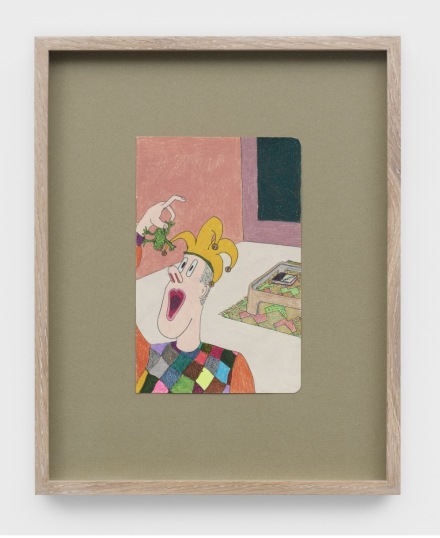
Michael Williams, Untitled (Frog) (2019-2020), via Eva Presenhuber
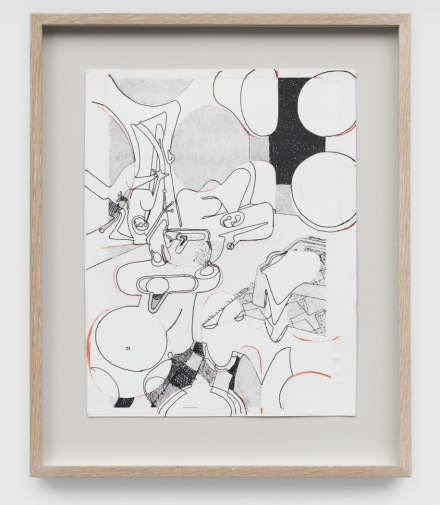
Michael Williams, Untitled Puzzle Drawing (Frogs 3) (2022), via Eva Presenhuber
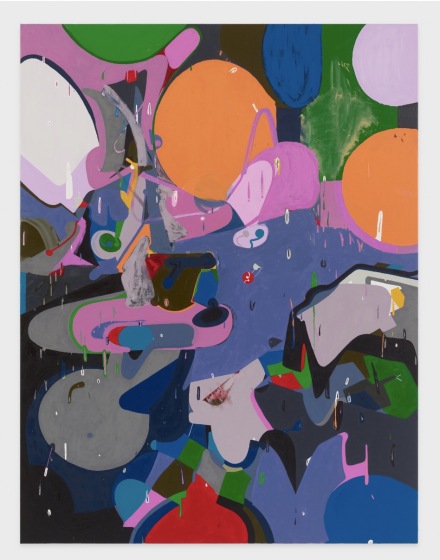
Michael Williams, Frogs 3 (2022), via Eva Presenhuber
Throughout, Williams has taken the primary composition and, through lacerating it, turns it into a segmented field, which he then repopulates with broad swathes of color. Beginning in 2010, he started photocopying drawings and contouring puzzle pieces across them before cutting out those sections to further warp as well as newly constitute the picture. A single-authored version of an exquisite corpse, each of these pieces is full of seeming non-sequiturs, contiguous but willfully non-integrated information, that still baits us with the possibility of resolution. (The floppy hat prongs survive in Frogs 8.) In their migration from diminutive paper to canvas—a transfer of scale as well as media—the drawings become an alibi for formal invention; as well, they offer frameworks for thinking more abstractly about the relationships between parts and the pressure each exerts on the whole. The Puzzle Paintings generate a structure, and maintain, alongside whatever nominal content might still be harbored, process as one enduring subject.
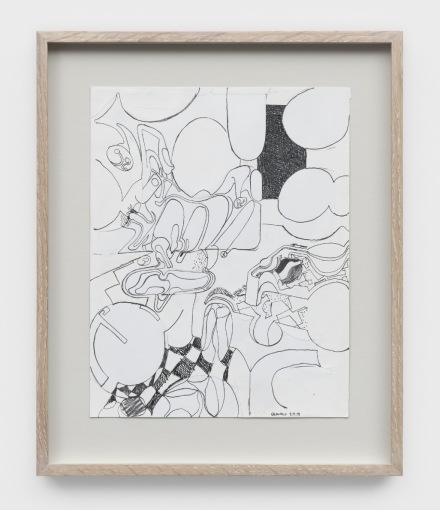
Michael Williams, Untitled Puzzle Drawing (Frogs 8) (2019), via Eva Presenhuber
Exaggerated palettes are consistent across the grouping: so much mint and carnation pink, lapis and auburn, a washed-out orange verging on peach and candy-apple red. There are also recurring instances of orbs—displaced or reinterpreted eyes, and a churning pinwheel. In each, the mixture of visual anarchy and careful construction make for a striking conversation with the original image, turning its already peculiar and borderline surreal nature into a point of endless permuation, Williams’s work turning the image into a space for an endless kaleidoscopic replication.
The show closes July 23rd.
– D. Creahan
Read more:
Eva Presenhuber [Exhibition Site]



